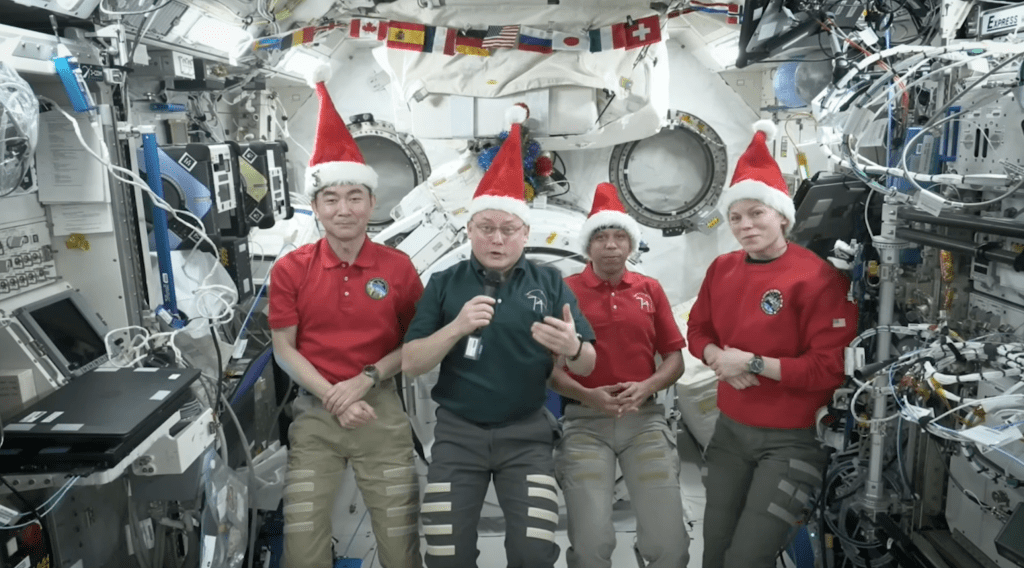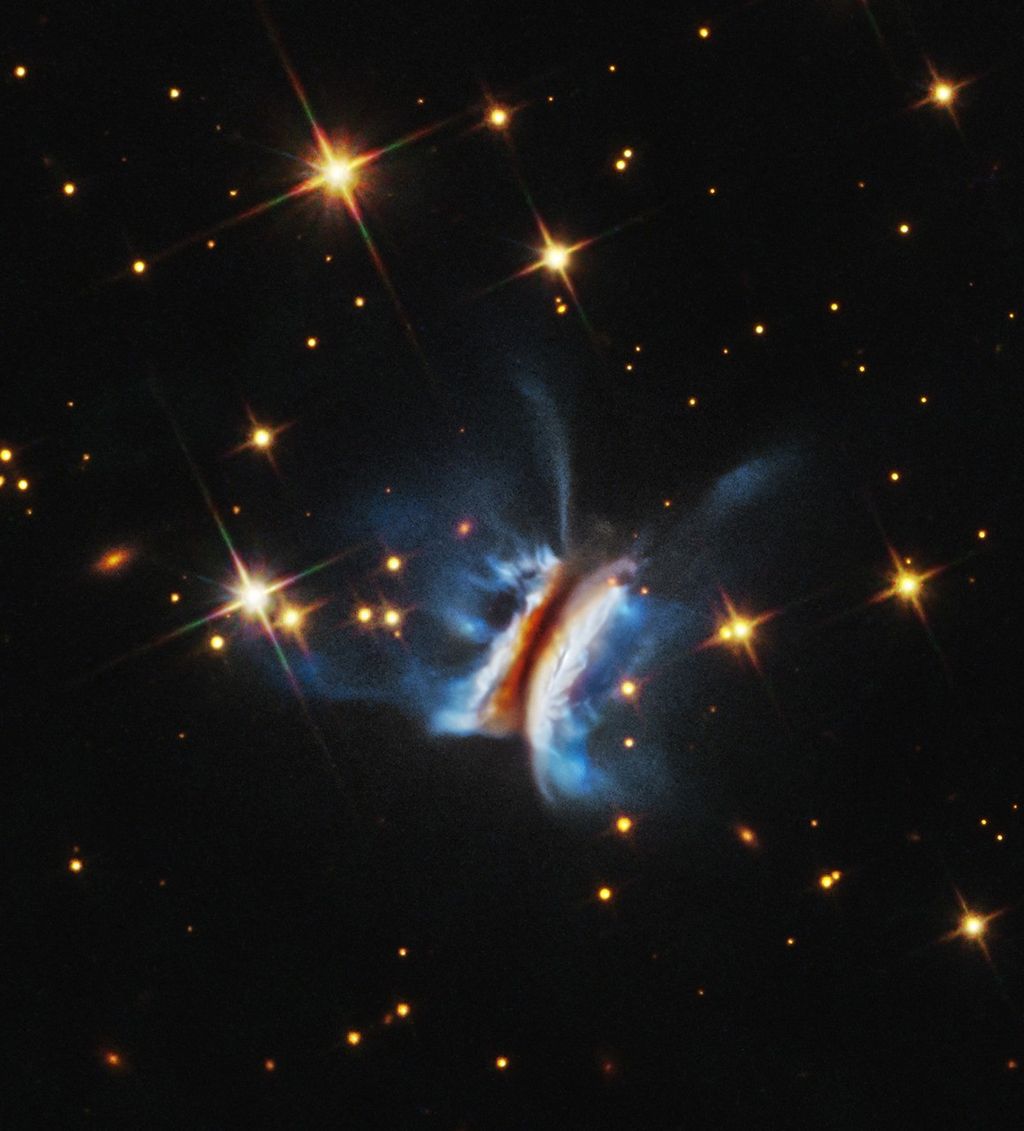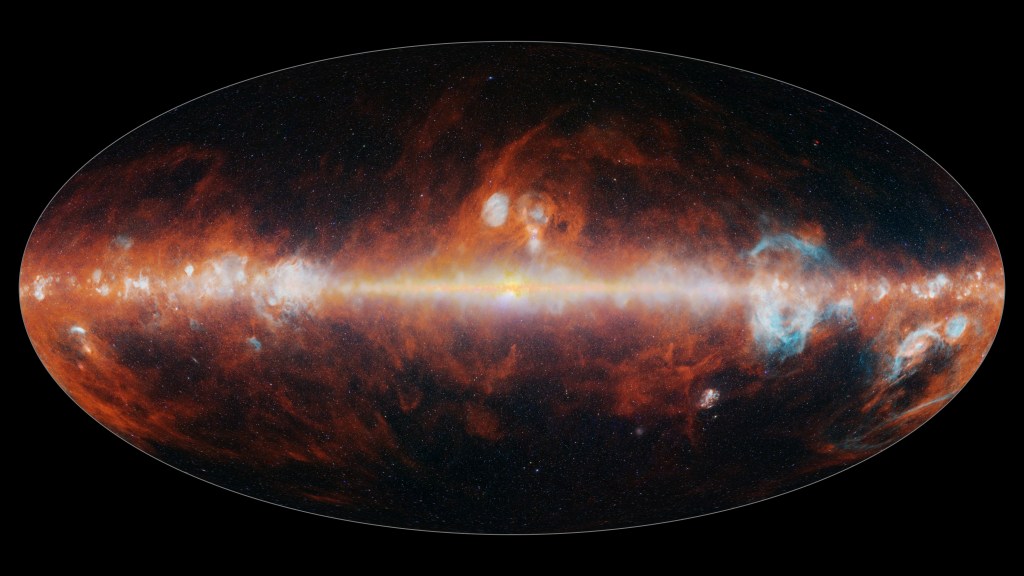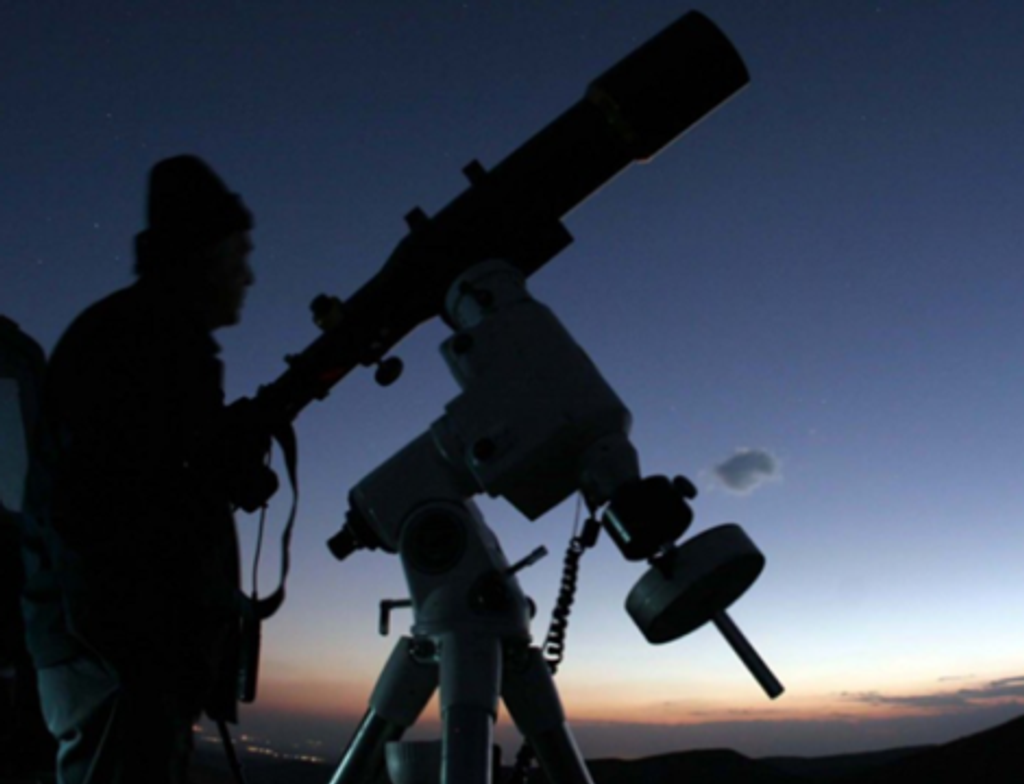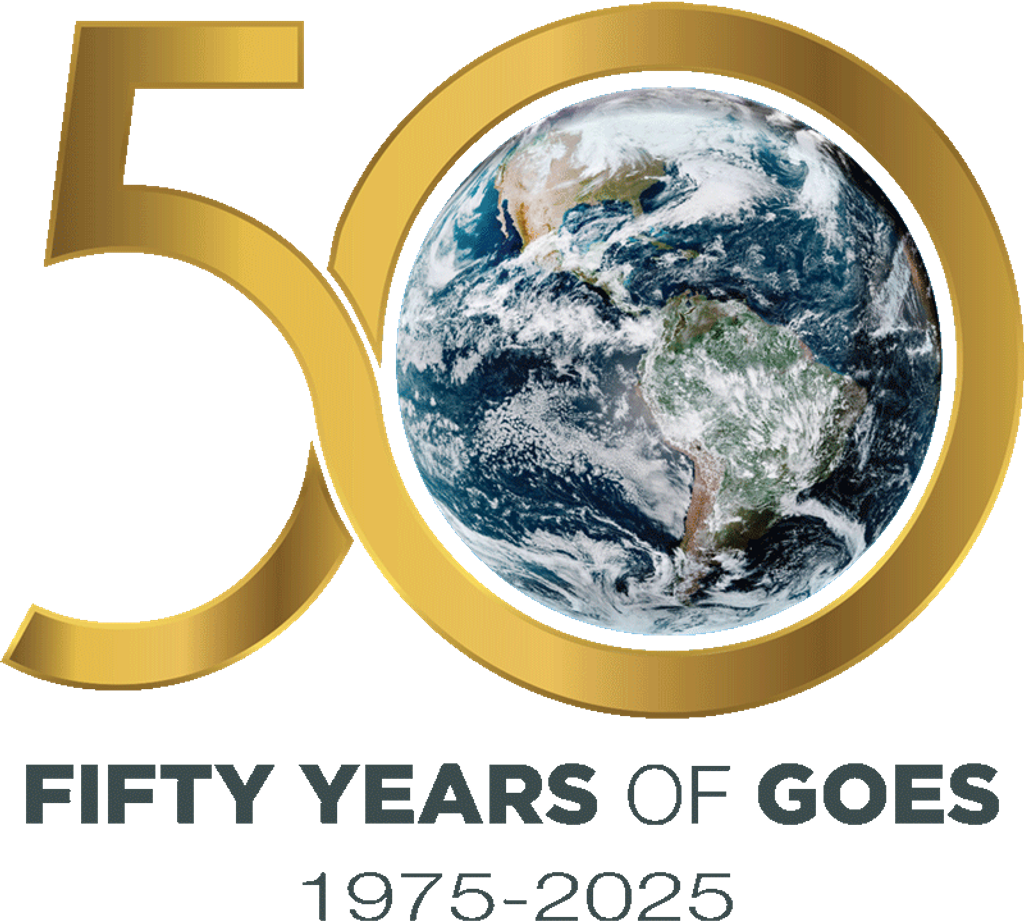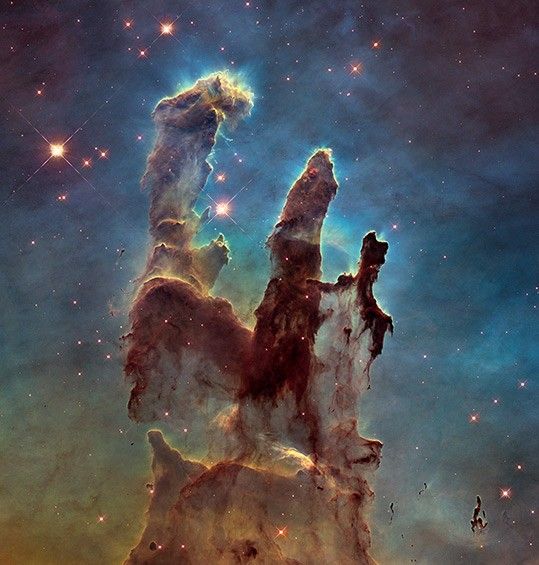1 min read
Color Images of Quasar 1208+101Split by Gravitational Lenses

NASA's Hubble Space Telescope (HST) color views of the distant quasar 1208+101 indicate that its image has been split in two by a gravitational lens. The quasar was first observed with HST's Wide Field/Planetary Camera in July 1991 as part of the Snapshot Survey for gravitational lenses. The Snapshot Survey consists of short (about four minute) exposures of several hundred very bright, very distant quasars with the Wide Field/Planetary Camera. Current theories of gravitational lensing suggest that several of these quasars should be seen as multiple images with separations smaller than can be seen in ground-based observations.
Gravitational lensing is a phenomenon by which the pull of a massive object, such as a galaxy, can bend light from another, more distant, object as the light passes near or through it, focusing the light in multiple identical images. The high spatial resolution capability of HST allows searches for multiple images at separations of only 0.2 arc seconds; this is about five times smaller than can be done with ground-based instrumentation.
The July 1991 image showed strong evidence of the existence of two sources separated by less than 0.5 arc seconds at the position of 1208+101, a quasar located nearly 10 billion light years from the Earth. According to Einstein's theory of general relativity, gravity should affect all colors of light in precisely the same way. The new images reveal that the relative brightness of the two components is, in fact, the same in a number of different color filters as predicted by Einstein's theory. This is strong evidence that the image shows a gravitational lens system and not the chance alignment of a star in our own galaxy with the distant quasar. HST spectroscopy will be required to definitively answer the question of the nature of the fainter image.
About the Object
- R.A. PositionR.A. PositionRight ascension – analogous to longitude – is one component of an object's position.12h 10m 57.07s
- Dec. PositionDec. PositionDeclination – analogous to latitude – is one component of an object's position.09° 54' 27.2"
About the Data
- Data DescriptionData DescriptionProposal: A description of the observations, their scientific justification, and the links to the data available in the science archive.
Science Team: The astronomers who planned the observations and analyzed the data. "PI" refers to the Principal Investigator.Investigators: Professor John Bahcall, Dr. Donald Schneider, Dr. Dan Mayoz, all of the Institute for Advanced Study
- Object NameObject NameA name or catalog number that astronomers use to identify an astronomical object.Quasar 1208+101
- Release DateJanuary 13, 1992
- Science ReleaseNASA Hubble Space Telescope “Snapshots” Probe the Early Universe
- CreditJ. Bahcall/NASA
Related Images & Videos

Quasar 1208+101 (Gravitational Lens Candidate)
An image of the gravitational lens candidate taken with NASA's Hubble Space Telescope's Wide Field and Planetary Camera (WF/PC) in PC mode, on 23 December 1991. The HST picture shows that the quasar actually consists of two images. HST observations to be made this winter will...
Share
Details
Claire Andreoli
NASA’s Goddard Space Flight Center
Greenbelt, Maryland
claire.andreoli@nasa.gov

